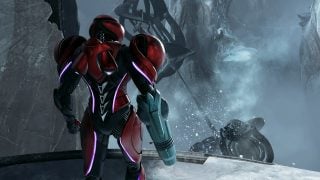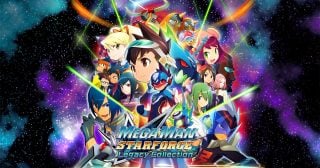Discover what makes Nintendo so special in today’s gaming world through Nintendo Inquirer’s N Factor series!
“What do you love about Nintendo? The more I ask myself that question, the more complex my answer gets. I decided to use the term “N factor” to describe my feelings, because while it’s near impossible to define, Nintendo’s best games all have some undeniable and exclusive allure about them. They’re the result of finely tuned ideas and ideals that collectively personify the company behind them.”
The N Factor series:
-
N Factor, Part 1: Charm
N Factor, Part 2: Respect
N Factor, Part 3: Agelessness
N Factor, Part 4: Immersion
N Factor, Part 5: Creativity
N Factor, Part 6: Unity
N Factor, Part 7: Polish
N Factor, Part 8: Timelessness
N Factor, Part 9: Fun
N Factor, Part 10: Vision
One of the most unnoticed and, these days, neglected elements of game design is respect. It’s also, in my mind, one of the most important. Respect has many faces when it comes to the creation of video games, but they all revolve around one core concept: the developer’s trust in and appreciation for their audience. One of my favorite snapshots of what I’m talking about is Super Mario Bros. 1-1. Before we go any further, I’d like you to take a look at this fantastic video from YouTube channel Extra Credits.
Unless you’ve seen a breakdown like this before, I’m willing to bet that you’ve played 1-1 countless times without ever putting much thought into it. I know I did, and there’s a very good reason for that: respectful game design is subtle. In the best examples, like Mario’s first major outing, you won’t even realize that the game is teaching you, pushing you to explore its rules and slowly apply them further with every attempt you make. A talented designer can make all of this happen without ever hitting you over the head with text bubbles or button prompts.
Yes, Super Mario Bros. would make a superb example of this concept from start to finish. I could easily go on about its ability to coach players without treating them like dummies, but there’s another Nintendo classic I’d like to discuss. It’s a game that came way ahead of its time, boasted countless, absurdly ambitious design concepts, and gave its players’ intelligence far more credit than most games before or since. This has got to be a Zelda game, right? But probably not any of the ones you’re thinking of. I’m talking about Zelda 2: The Adventure of Link.
Zelda 2 has always had a reputation as an outlier of the franchise, and rightly so. The Legend of Zelda was nothing short of a masterpiece. It would be reasonable to expect its sequel to retain at least some of its mechanics and style. Despite much of the original game’s talent being involved, though, the sequel was about as different from Link’s debut adventure as it could possibly be. The Zelda franchise would later make a significant return to form with Super Nintendo’s A Link to the Past, all but officially designating Zelda 2 as the series pariah.
Forget that negative stigma, though, because Zelda 2 is every bit as important to Link’s heritage as the rest of his adventures. Like the original Legend of Zelda, and most Zelda games since, The Adventure of Link is an open world game. These days, the open world concept is so prevalent that it’s actually becoming tiring, but in 1988 it was an idea very much in its infancy. From the moment you leave the sleeping princess Zelda’s side and step out into the world, you’re presented with dozens of options. At no point does the game assault you with a map full of markers, giant inexplicable arrows, or long winded explanations about your quest. You are given the freedom to go in any direction you like, and no matter which path (or jungle, desert, etc.) you follow, there are innumerable interesting things to find.
The same brilliant, unspoken game design that guides 1-1 is present in The Adventure of Link, as well. The world map greets you with grasslands, jungles, roaming ‘enemies, and most noticeably, a path. Clearly the safest option, most first time players are going to opt to stick to the road. After a short walk, you’ll reach a fork that silently asks “would you like to venture west, along a road with no end in sight, or east, where just around a bend you can see what is unmistakably a town, and likely some friendly faces?” Exploring this town will bring you to your first interactions with the game’s informative NPCs, talk of nearby caves and dungeons, side quest opportunities, and some subtle nudging toward Parapa palace, your first main objective. Zelda 2, and its designers, trust you as a player to take these steps on your own. If you do choose to deviate from their gentle direction, the worst that can happen is you’ll find something awesome off the beaten path.
As you eventually make your way into the wilds, caves, and the palaces that make up Zelda 2’s main questline, you’ll quickly learn that this game is exceedingly hostile. Games at the time weren’t nearly as timid about scaring players off with steep difficulty curves. After all, most kids weren’t buying every game that came out, so the more mileage we could get out of a title, the better. What makes The Adventure of Link’s approach to difficulty unique and interesting is that it dares to make death itself a learning experience. Sound familiar? If you’ve enjoyed any of From Software’s Souls games over the past six years, I daresay you owe a great debt of gratitude to Zelda 2. Every death in it comes with a firm reprimand (being sent back to the beginning of an area or the game’s starting point and losing all of your experience points) and also a valuable lesson (don’t go into that cave yet, I need an item or a few more levels before I try this, or I need to practice my slashing and blocking on some easier enemies first). These repercussions build the player’s skill and understanding of the game’s mechanics seamlessly, and they do it without scaring them off or making them feel inadequate.
The way you gain footholds in Zelda 2’s sprawling world was, at the time, revolutionary. Each time Link exhausts his stock of lives and chooses to continue, he’s sent all the way back to his princess’ side, at the game’s start. He keeps all of his levels, skills, and items, and gets a rejuvenating look at his beloved, but then must venture back into the inhospitable world outside for his next heroic attempt. This structure could become incredibly frustrating if you were forced to navigate the same series of caves, mountains, swamps, and enemies every time you continued. Zelda 2’s solution to this problem is brilliant, and serves up some of the most satisfying accomplishments in gaming.
My favorite example is the hammer, and it comes with a personal anecdote. Just south of the first town in the game is a massive boulder blocking the path. I spent hours agonizing over this confounding obstacle, catching a glimpse of it every time I ran out of lives and was sent back to the beginning area. Our household copy of Zelda 2 belonged to my big brother (a Christmas present) so naturally he got more playtime and had long since overcome this massive boulder that mocked me every time I walked by it. When he would play, I would watch him start at the beginning, walk straight to that blasted rock, and smash it to bits with the hammer, instantly propelling him into a much later portion of the game. It’s not one of my proudest gaming memories, but I begged and begged my big bro to get that hammer for me on my save file. I was certain that if I could just explore the area beyond the boulder I would be able to regain my footing and see this quest through to the end.
Well, he did agree to get me that hammer, as a birthday present. But what he knew and I would eventually discover, is that the journey through the swamp, caves, and mountain maze that leads to the hammer is absolutely vital to the learning process of the game. Sadly, my first save file would never see the game to its conclusion, and it wouldn’t be until many years later that I would brave that mountain maze myself and gain the experience and sense of accomplishment that would propel me through the rest of Link’s second quest.
I’m sure it’s pretty clear, at this point, that Zelda 2: The Adventure of Link is very special to me. Some of that is no doubt due to nostalgia, time and place. Even now, though, when I go back and play it, Zelda 2 blows my mind with its forward-thinking ideas. Hundreds of games and some entire genres today stand on the groundwork that it laid. This game perfectly embodies one of Nintendo’s most important guiding principles: immense appreciation, confidence and respect for its fans. This simple, yet underused, concept gave me one of my favorite games in the Zelda franchise, one that is still influencing game design nearly 30 years later.
If you haven’t yet played Zelda 2: The Adventure of Link, remember that it’s available in the Nintendo eShop on both the Wii U and 3DS. So hop on over to those pages if you’d like to play a true Nintendo classic on one (or both) of your consoles!
Leave a Comment





